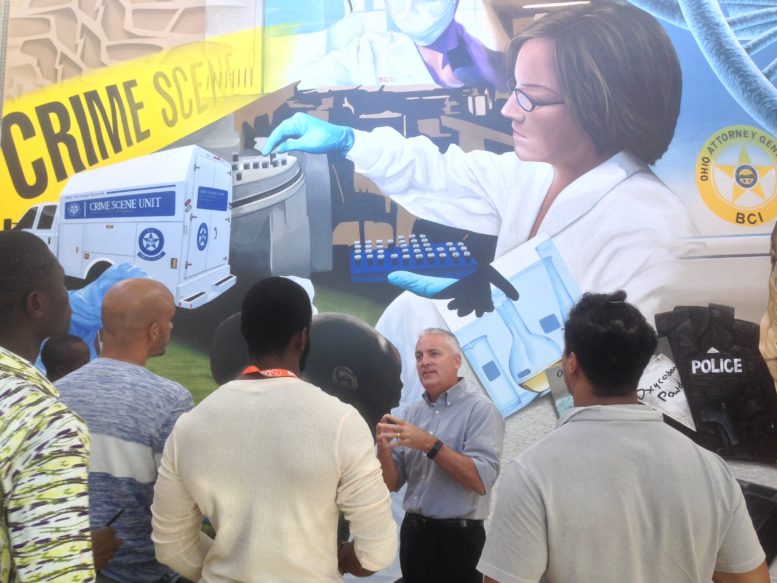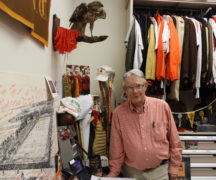By DAVID DUPONT
BG Independent News
A paper published in a leading journal offers way to make the assessment of sexual assault kits more efficient. That could lead to more perpetrators bein identified and held accountable.
The scholarly paper published in the Journal of Forensic Sciences late last year was the combined effort of the Ohio Attorney General’s Center for the Future of Forensic Science at Bowling Green State University and the state’s Bureau of Criminal Investigation. The work was funded by the Laura and John Arnold Foundation.
Jon Sprague, director of the BGSU Center, said the foundation has a long standing interest in applying statistical methods to criminal justice and forensics science issues.
The study, conducted at the BCI lab on campus, looked at the 14,000 sexual assault kits collected through the Attorney General Mike DeWine’s initiative that was launched in 2011. That initiative aimed to process sexual assault kits, known as SAKs, which had been collected in evidence rooms around the state.
The BGSU project brought together a team from across the state to look at those 14,000 kits in the BCI database.
Jaime Kerka, from the BCI lab in Ridgefield, was tasked with data mining, digging down into the numbers. She ended up compiling a spreadsheet with 3 million cells, Sprague said.
That enabled the team to analyze what was in the kits.
“What was significant was the application of statistics to the evidence,” Sprague said. That looked at a multitude of characteristics recorded by the Sexual Assault Nurse Examiner (SANE) during the initial examination of the victim.
That would include evidence collected from swabs from various parts of the body, vagina, anal, ear, neck, as well as samples from clothing, including underwear. “This can guide people where to you want to start and speed up the process and reduce cost,” Sprague said.
The goal is to get DNA that’s eligible to be entered into the national Combined DNA Index System (CODIS). Data from 2,500 of the kits were studied to see the likelihood that they would yield usable DNA samples.
The researchers made some important findings about how to do that, some of which confirmed what was already assumed.
The seven recommendations made were:
- The sooner a sample is collected the better. The more time that elapses the probability of getting a CODIS eligible sample decreases.
- SAKs should go to a forensic lab as soon as possible.
- Kits not sent immediately to a forensics lab should be stored according to established procedures to preserve the sample.
- Areas of the body where the attack occurred should be tested first. If no specific areas are identified, vaginal swabs, tests of the crotch area of underwear, and skin tests from ear and neck are most likely to yield useful samples. The latter, Sprague said, was a surprise.
- Tests of other areas, lip, hairs, fingernails, and mouth, yield usable samples less often.
- If reports indicate multiple tests of the samples yielding the same DNA profile, those tests need not be done. “This will help eliminate, repetitive testing,” the paper stated.
- DNA from any partner with whom the victim has had consensual sex should be collected. While that seems to go against the belief that a victim’s previous sexual history is not relevant to an investigation, it is important so that partner’s DNA can be ruled out and not added to the CODIS database.
This study, coming on the heels of the SAK analysis initiative, shows that “Ohio’s really leading the way,” Sprague said.
For him “to bring the BCI and BGSU folks together… was the most fun part of the project.”
As a toxicologist, this was “the first time I’ve seen statistical analysis at this level,” Sprague said. “We want to expand this out to other areas.” The team is continuing to work with the Arnold Foundation on other studies using this kind of modeling.
A graduate student is now looking at a smaller group of SAKs that have not been analyzed to see if the results are the same.
For Sprague, this study, the longest, most intensive done by the center, shows the promise of locating the BCI Lab here and developing forensic science programs at BGSU.
“Some of those things are finally coming true,” he said.
This fall, BGSU enrolled 19 first year forensic science majors. Another 15 have transferred into the program. The first will graduate in May.
“The interest level has continued to grow,” he said. “The excitement I’m seeing from prospective students is truly amazing.”





